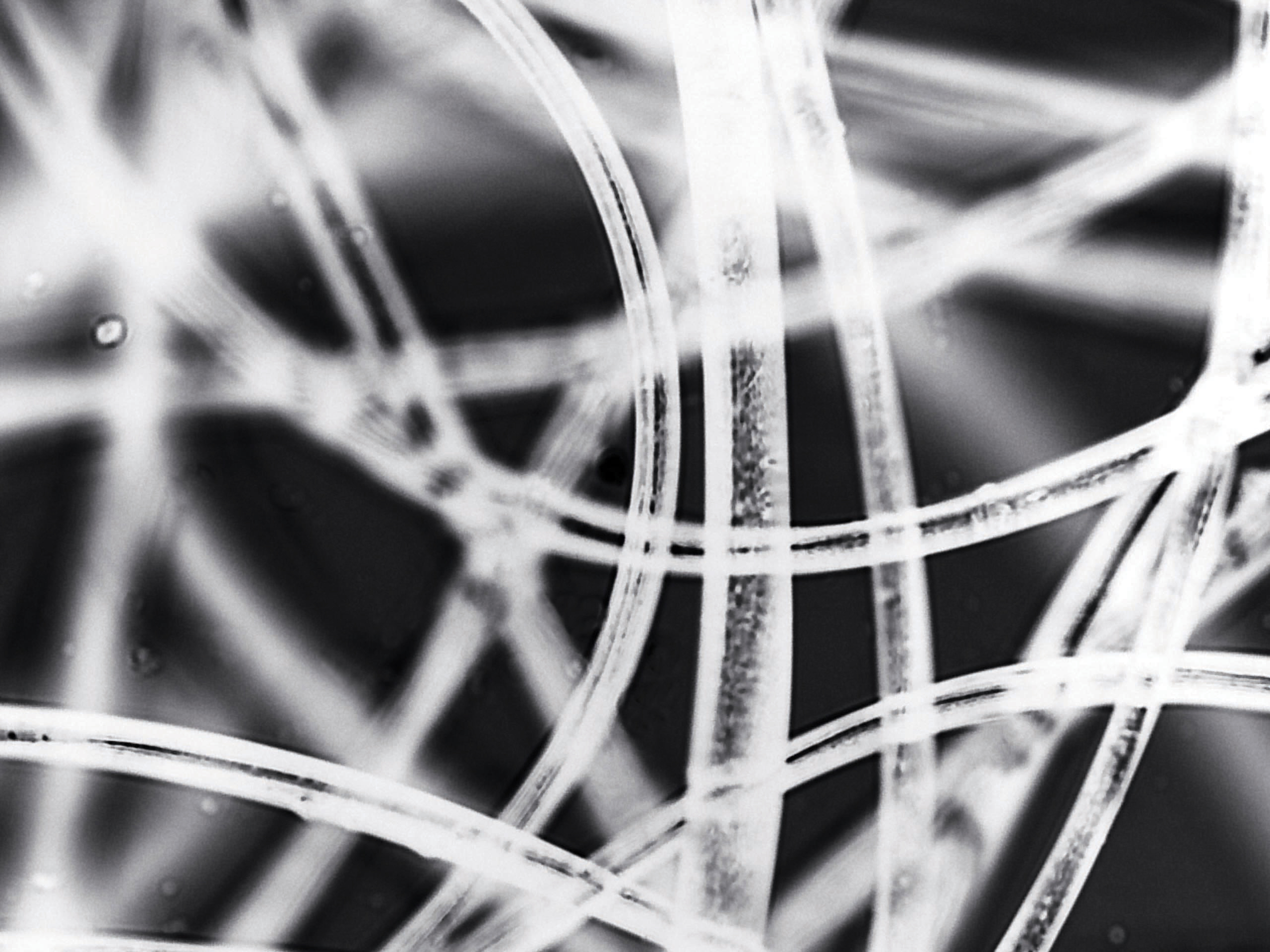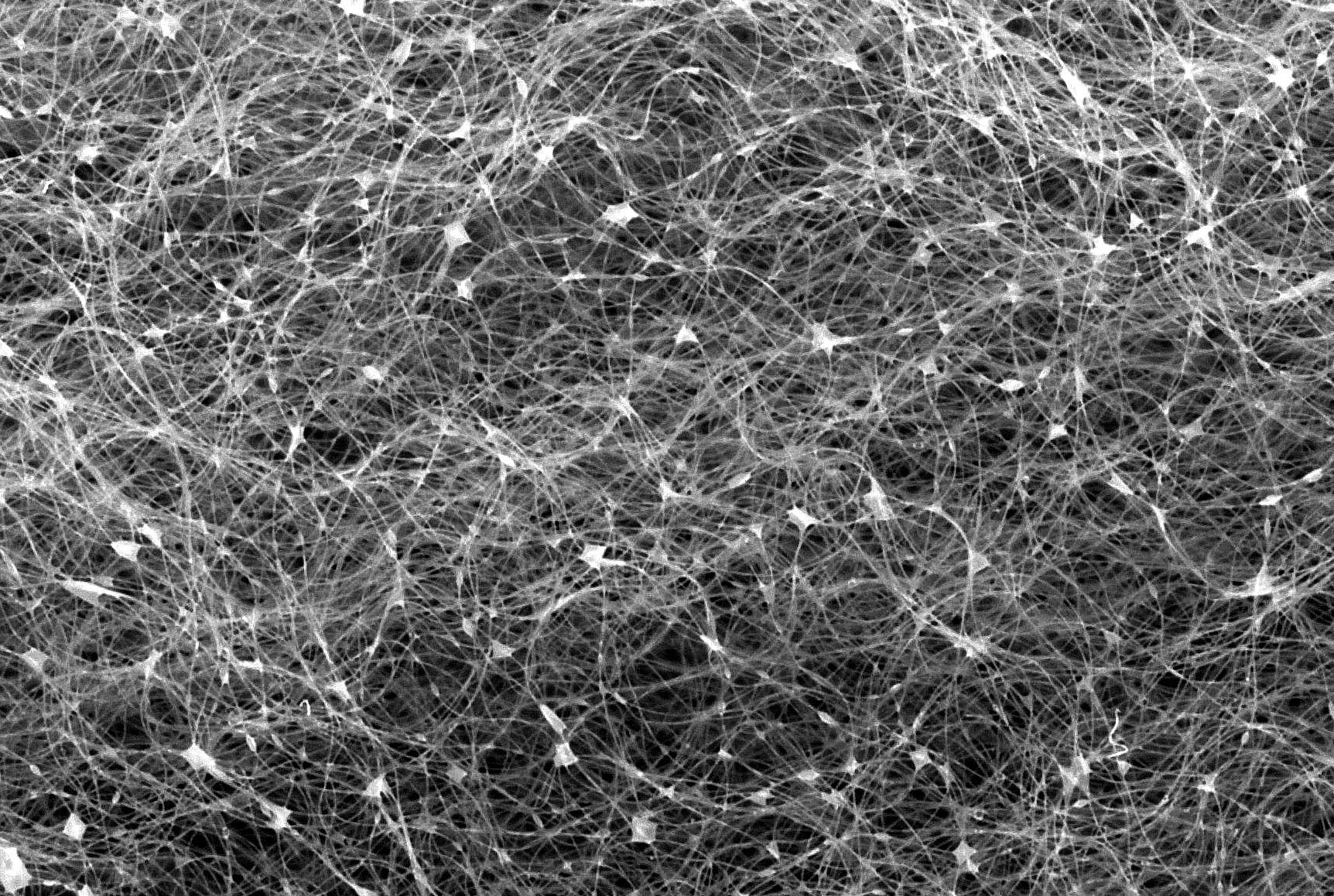Both synthetic and down insulation have their advantages and disadvantages. Which is “best” for outdoor use depends on your needs, preferences, and budget.
To pick the right one for your backcountry adventures, you first need to understand what synthetic and down insulation are and what they do.
- Down Insulation: what it is, properties, loft, fill power, pros and cons (separate article)
- Synthetic Insulation: what it is, properties, loft, short staple and continuous, pros and cons
Synthetic Insulation
What It Is
Synthetic insulation is made from strands of plastic fibers. Cilmashield, PrimaLoft, Polarguard, SpiraFil, HeatSync, Heetseeker, Thermic Micro, and ThermoLite are some examples of brand name synthetic fills. Some synthetic fibers are made from recycled plastics.
Synthetic insulation varieties may be specific to individual manufacturers or used by many manufacturers. Like down, all synthetics are not created equal.
Properties

PrimaLoft short staple fill microfibers. (Image courtesy of PrimaLoft)
Synthetics generally are hypoallergenic (unlikely to cause allergies), water-resistant, and dry quicker. They retain some insulating ability when wet, a consideration in moist climates, on paddling trips, or with beginners and children.
Compared to down, synthetic fill is heavier and offers less warmth for the weight, though by how much depends on the specific variety of synthetic.
Synthetics tend to break down over time, losing effectiveness. However, some high-end synthetics approach down's insulating abilities and nearly all synthetics are more water-resistant and less expensive than down.
Synthetic insulation come in two distinct varieties: short (or cut) staple and continuous filament. Some synthetic fibers are hollow for lighter weight.
Short Staple
Short staple insulation, also called cut staples, uses short, fine strands (microfibers), approximately less than two inches long. These short, small fibers are densely packed to trap more warmth in air spaces and maximize thermal efficiency.
Short staple fills are soft, flexible, and more compressible. They typically are not as long-lasting as other synthetics.
PrimaLoft One and Sierra Design's HeatSync are examples of short staple insulation.
Continuous Filament

Continuous filament fibers of PrimaLoft Synergy multi-denier insulation. (Image courtesy of PrimaLoft)
Continuous filament insulations use a long, continuous strand of filament. Continuous filament fibers are interlocking and thicker and stronger than short staple fills for more durability and loft resilience. The insulation is also less likely to migrate.
However, continuous filament insulation doesn't compress as well as short staple and feels stiffer.
Climashield Apex and PrimaLoft Infinity are examples of continuous filament insulation.
Loft
Synthetic insulated sleeping bags and jackets typically are heavier compared to down versions with the same amount of loft, or puffiness. Higher-end synthetics will be closer in performance and feel to down.
Pros
- Retains some heat when wet

Continuous filament fibers of PrimaLoft Infinity fine-denier insulation. (Image courtesy of PrimaLoft) - Dries quicker
- Hypoallergenic
- Less expensive
- Easier to clean
Cons
- Heavier
- Less compressible
- Breaks down faster for shorter lifespan
Also, see "Gear Explained: Down Insulation."
(With reporting by Seth Levy and Alicia MacLeay)

 by Heather Sable
by Heather Sable









